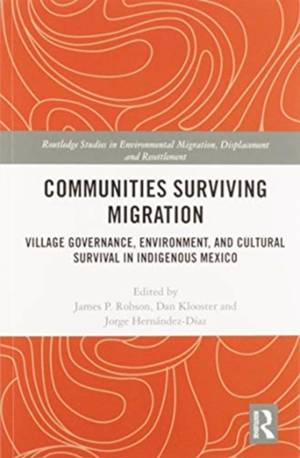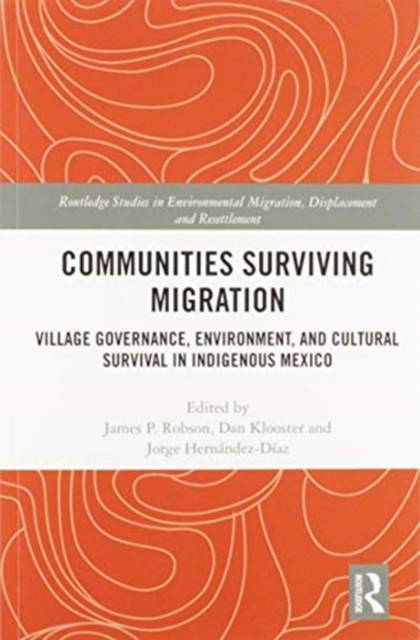
- Retrait gratuit dans votre magasin Club
- 7.000.000 titres dans notre catalogue
- Payer en toute sécurité
- Toujours un magasin près de chez vous
- Retrait gratuit dans votre magasin Club
- 7.000.0000 titres dans notre catalogue
- Payer en toute sécurité
- Toujours un magasin près de chez vous
Communities Surviving Migration
Village Governance, Environment and Cultural Survival in Indigenous Mexico
Description
Out-migration might decrease the pressure of population on the environment, but what happens to the communities that manage the local environment when they are weakened by the absence of their members? In an era where community-based natural resource management has emerged as a key hope for sustainable development, this is a crucial question.
Building on over a decade of empirical work conducted in Oaxaca, Mexico, Communities Surviving Migration identifies how out-migration can impact rural communities in strongholds of biocultural diversity. It reflects on the possibilities of community self-governance and survival in the likely future of limited additional migration and steady - but low - rural populations, and what different scenarios imply for environmental governance and biodiversity conservation. In this way, the book adds a critical cultural component to the understanding of migration-environment linkages, specifically with respect to environmental change in migrant-sending regions.
Responding to the call for more detailed analyses and reporting on migration and environmental change, especially in contexts where rural communities, livelihoods and biodiversity are interconnected, this volume will be of interest to students and scholars of environmental migration, development studies, population geography, and Latin American studies.
Spécifications
Parties prenantes
- Editeur:
Contenu
- Nombre de pages :
- 224
- Langue:
- Anglais
- Collection :
Caractéristiques
- EAN:
- 9780367584122
- Date de parution :
- 30-06-20
- Format:
- Livre broché
- Format numérique:
- Trade paperback (VS)
- Dimensions :
- 156 mm x 233 mm
- Poids :
- 439 g

Les avis
Nous publions uniquement les avis qui respectent les conditions requises. Consultez nos conditions pour les avis.





